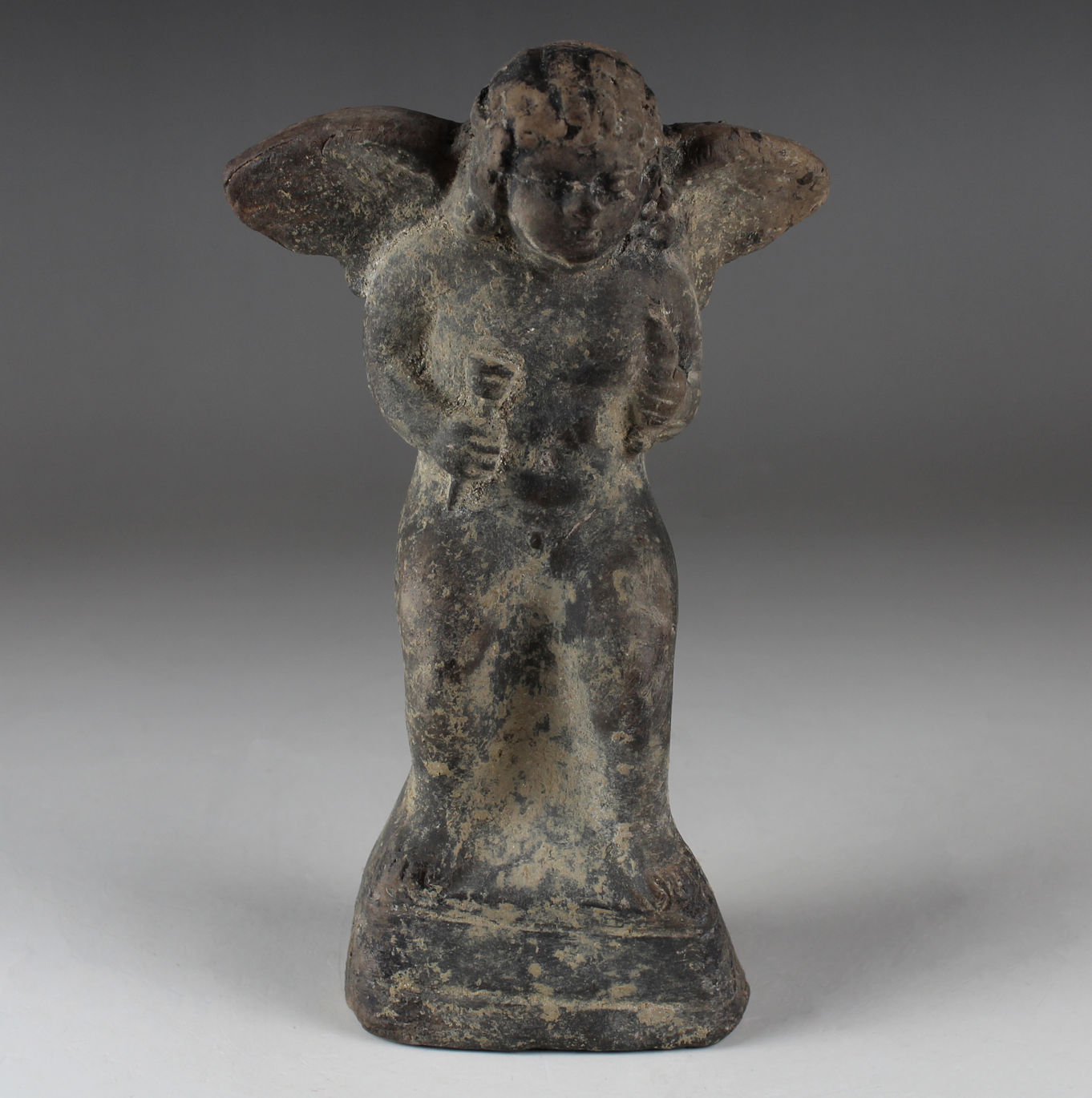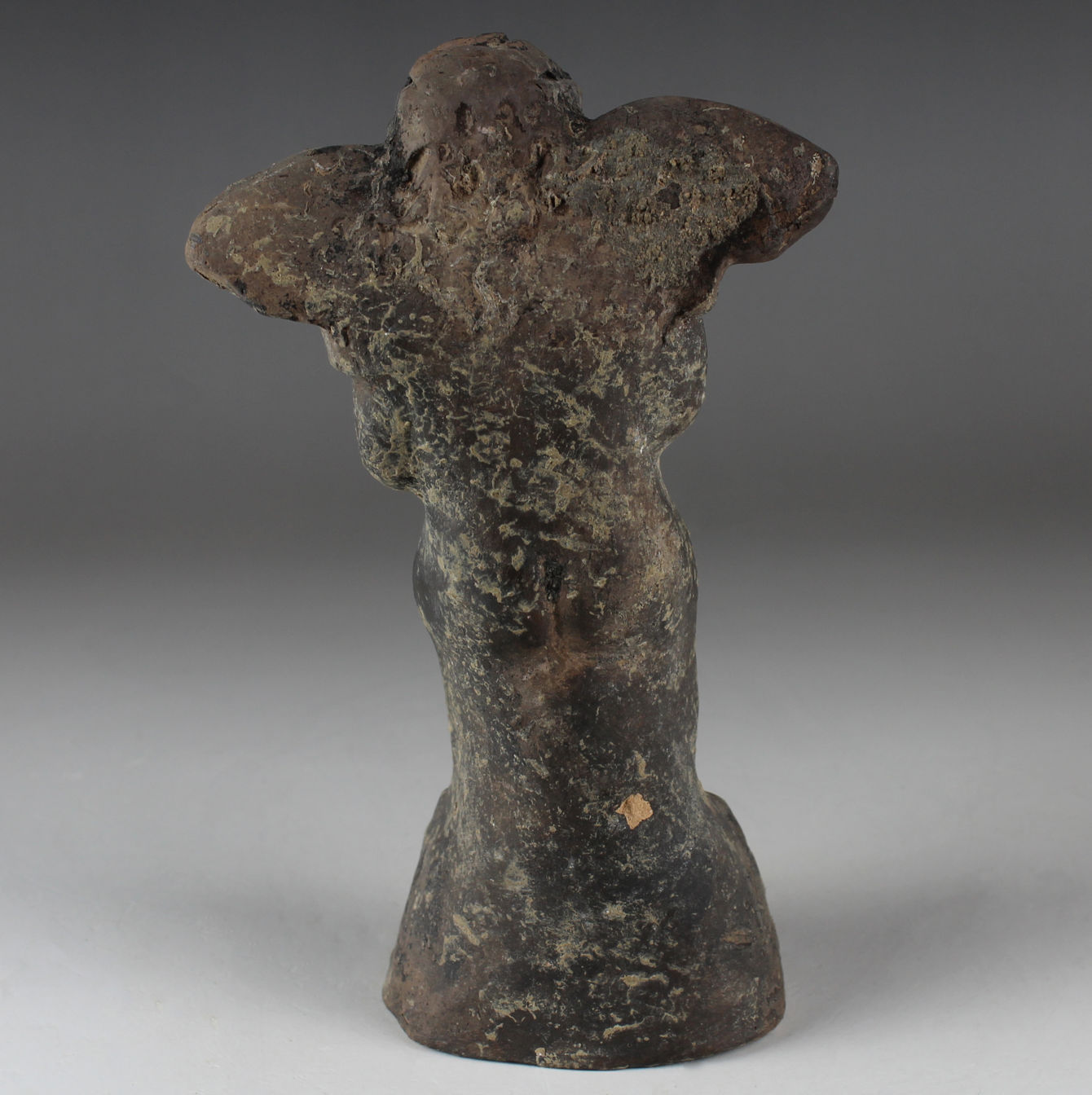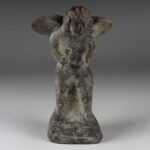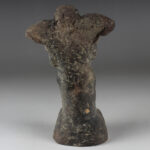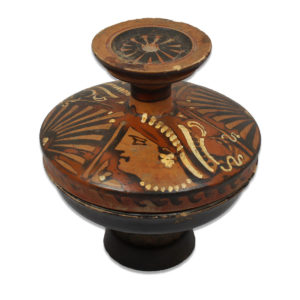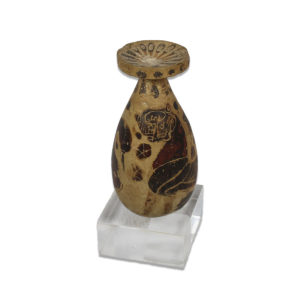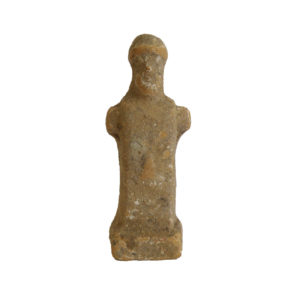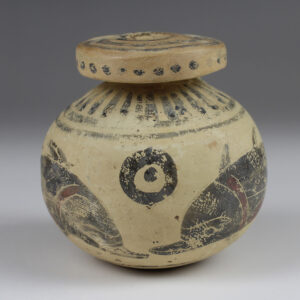Description
| ITEM | Statuette of Eros |
| MATERIAL | Pottery |
| CULTURE | Greek, Hellenistic period |
| PERIOD | 2nd – 1st Century B.C |
| DIMENSIONS | 140 mm x 85 mm |
| CONDITION | Good condition |
| PROVENANCE | Ex English art dealer, acquired in February 2013 |
Statuettes of Eros from the Hellenistic period (c. 323–31 BCE) are notable for their lively and dynamic depictions of the god of love and desire. Unlike earlier, more formal representations of Eros, Hellenistic statuettes often portrayed him as a playful, youthful figure, capturing a sense of movement and emotion that reflected the artistic trends of the era. Eros was depicted in a variety of poses—sometimes flying, reclining, or holding symbols such as a bow and arrows, which he used to ignite love. These statuettes, often made from terracotta, bronze, or marble, were popular as decorative items in homes and sanctuaries, symbolizing not only romantic love but also familial affection and the broader concept of desire.
The Hellenistic period saw a shift toward more naturalistic and personal depictions in art, and this was evident in the way Eros was portrayed. The god was often shown with a mischievous or tender expression, emphasizing the emotional and unpredictable nature of love. The statuettes might depict Eros engaging in everyday activities, such as playing with animals or interacting with other mythological figures like Psyche, his beloved. This humanization of deities like Eros was characteristic of Hellenistic art, which sought to connect divine figures to the human experience in a more relatable and intimate way.
Eros statuettes served not only as decorative objects but also had a symbolic role in Hellenistic society. They were often given as gifts at weddings or used in household shrines to invoke love and harmony within the family. In addition, these statuettes were sometimes associated with funerary practices, symbolizing eternal love or the soul’s journey after death.


